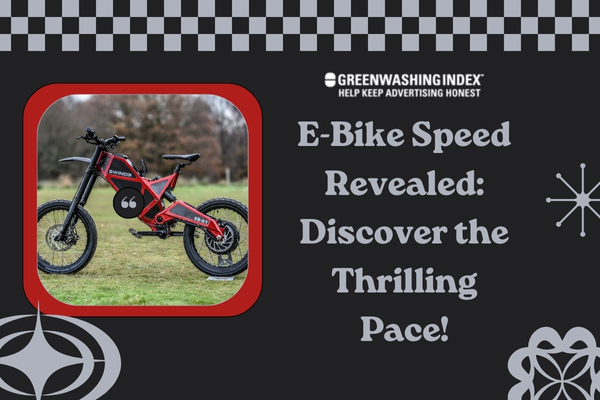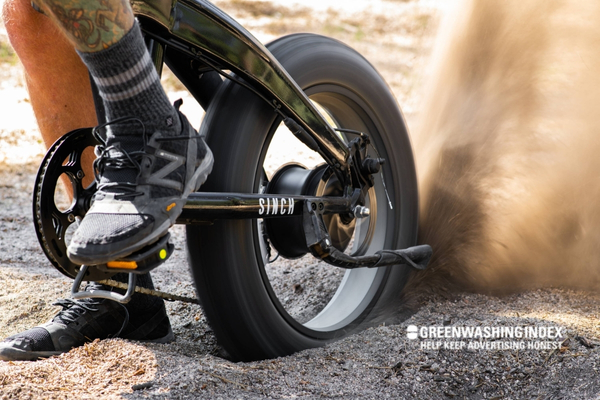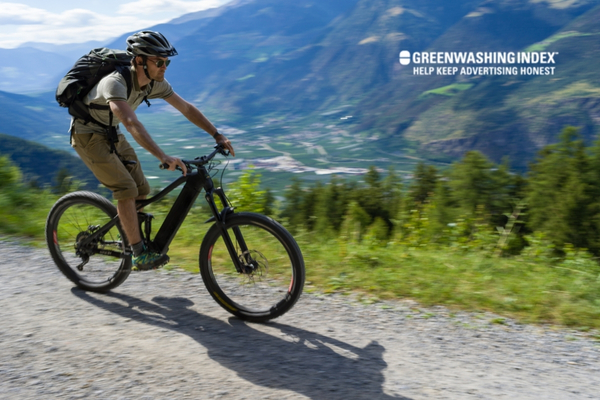

Ever wondered just how swiftly an electric bicycle can whizz past you? The term “E-Bike speed” might sound simple, but there’s a surprising rush waiting beneath your feet that’s ready to sweep you off into the sunset!
Think of the breeze in your hair, the blur of passing scenery, and, oh, that sly grin as cars crawl in traffic while you zoom ahead—yeah, talking about a ride that pumps up your day!
What truly defines how fast an e-bike can go? Well, it’s all down to class type and legal speed limits. Generally speaking, your average e-bike will comfortably cruise at speeds around 20mph (32 km/h).
However, for those craving more zip-and-zoom from their two-wheeled steeds, certain e-bikes can rev up to about 28mph (45 km/h), offering a brisker tempo for your travels.
Here’s What You Will Learn:
When we talk about how fast an e-bike can go, it’s not just about the rider pedaling hard. E-bikes have a motor that helps make them go faster. But just how speedy are they? Let’s get into the details.

First things first, not all e-bikes are the same. There are different types, or classes, of e-bikes, and each class has its own rules for speed.
Class 1 e-bikes are like your regular bike but with a little kick. They have a motor that helps when you pedal, but it stops helping when you hit 20 miles per hour (mph). This means your e-bike won’t go faster than 20 mph with motor help.
Class 2. These bikes also have motors that stop helping at 20 mph. But they have something extra: a throttle. A throttle lets you move without pedaling at all—kind of like a scooter!
Class 3, and these bikes mean business when it comes to speed. The motor in these bikes helps until you hit 28 mph! However, in most places, they are meant only for adults, and some rules say you gotta wear a helmet.
Every place has rules—e-bike speed is no different! So what’s legal depends on where you ride.
In the United States, the law says each state decides its own limits for e-bike speeds on roads and trails. Most places stick close to the class system I mentioned earlier: up to around 20 mph for Classes 1 &2, and sometimes as high as 28 mph for Class 3 if wearing a helmet on certain roads.
It gets tricky, though, because some areas say, “Hold up—we have our own ideas.” That might mean local laws could keep speeds lower than what your bike can do technically.
Now let’s dig into what makes an e-bike zip around—the battery and motor!
An e-bike’s battery plays big-time in how far it can go before needing another charge but not so much in max speed directly.
The real star here is the motor. The power of an e-bike’s motor is measured in watts—a higher wattage means more power to push that bike forward fast! A common motor might be between 250 watts to 750 watts or even more for those speedy ones!
But remember—more power doesn’t always mean super fast because those legal limits still apply.
It’s about balance: enough power to make riding smooth but staying within those boundaries set by laws so everybody stays safe on the road (or trail).
So when thinking of E-Bike performance, remember these three pillars:
And there we go—that’s what decides how quick your electric bicycle velocity will be! Whether cruising along at a comfy pace or zipping up hills with extra oomph from your trusty steed…er…I mean e-bike!
Also Read: Greenhouse Gardening: Your Ultimate Guide to Aquaponics
When I think about how fast an e-bike can go, there’s a specific number that often comes up: 28 mph. You might wonder, why precisely this figure? Well, it turns out there’s more to this magic number than meets the eye.
The main reason for capping the e-bike speed at 28 mph is safety—both for the rider and everyone around them. Let me break it down simplistically:
Safety isn’t just about avoiding accidents; it’s also about peace of mind while enjoying your ride.
Let’s face it: speed is exciting! But with great speed comes great responsibility. Setting speed limits for electric bikes plays its part in keeping everyone playing fair and safe.
Picture this:
When it comes down to it, having these limits helps riders tick along within sensible bounds rather than gunning it wherever they fancy—which isn’t cool or safe.
As I think about e-bike speed, it strikes me how important it is for cyclists to ride at a similar pace. This idea of a set standard is not just useful but quite essential for creating balance among riders.
E-bike speeds are not just about how fast one can go; they’re also about consideration for others on the road and creating a smooth flow of bike traffic.
For instance, imagine you’re on a bike path with your electric bicycle (e-bike). You wouldn’t want someone zipping past you at twice your speed all the time, would you?
Not only does this create a jarring experience, but it could also be unsafe. Now, if everyone sticks around the same e-bike speed, there’s a beautiful kind of harmony that happens. Everyone moves together like they’re part of an orchestra – each cyclist in tune with the others.
This set standard doesn’t mean everyone must ride at exactly the same speed. After all, e-bikes come in various models with different capacities.
But there’s usually an unspoken agreement—a common electric bicycle velocity—that most riders will understand and respect. That way, no matter what model your e-bike is or how new you are to riding one, you can feel like part of the group.
On shared paths where bikes mingle with pedestrians and traditional cyclists, having consistent E-Bike speeds benefits everyone as well. It lessens confusion and makes for safer passing procedures because people more or less know what to expect from approaching e-bikes.
Let’s take Europe as an example: they often have specific regulations that cap the speed of electric bikes at around 25 kilometers per hour (15 miles per hour) when in pedal-assist mode. This regulation helps keep things orderly and predictable when various types of riders and walkers share routes closely.
When talking about efficiency in terms of energy consumption rates relative to E-Bike speeds, maintaining certain levels becomes immensely crucial.
Believe me when I say that managing your speed well can actually have impressive effects on how long your battery lasts! Here’s something important: zooming around at maximum power all the time will definitely eat up your battery much faster—the faster you go beyond a certain point (think diminishing returns), the more power it takes to maintain that increased acceleration due to things like wind resistance.
On the other side of things is cruising along at a moderate clip, which typically uses energy much more effectively. It means I won’t find myself stranded far from home with an e-bike that has run out of juice too soon!
Riding efficiently gives me surprisingly good mileage before needing another charge—extending my adventure without depending on frequent recharging stops or carrying extra weight from backup batteries.
What’s more efficient than just moderation?
Smart use! You see, modern electric bicycles usually pack some clever tech—like modes for optimizing your ride based on conditions or preferences. Using such features thoughtfully goes hand-in-hand with smart energy management while riding within suitable e-bike speed limits—and thanks to this tech know-how, we get more bang for our battery buck!
Now let’s talk numbers—for some context—most standard e-bikes fare best, staying within 20 mph (32 km/h). At this pace, many well-made ones may provide assistance over distances far longer than if I rode them like race bikes, hitting their ultimate top-end velocities straightaway.
Also Read: Washer and Dryer Disposal: Eco-friendly Methods Revealed!
When I think about the E-Bike speed, I’m truly amazed by how these bikes zip around. An electric bike, or an E-Bike, usually makes getting from one place to another quick and effortless. But what really gets me excited is when we talk about those high-powered e-bikes that kick it up a notch.

Let’s get into the details of just how fast these brilliant machines can go. When talking about the speed of electric bikes, we often think about standard ones that ride pretty fast but still within certain boundaries set for safety reasons. However, some e-bikes out there are designed to blaze beyond typical E-Bike speeds.
So when we chat about just how speedy an E-Bike can be, remember there’s a world where these eco-friendly rides aren’t just competing with traditional bikes—they’re starting to give gas-guzzling motorcycles a run for their money on the subject of sheer velocity!
It’s incredible to see E-Bike speed reaching new heights and bringing us thrilling adventures on two wheels while being kinder to our planet, too!
Also Read: Mattress Disposal: Easy Steps for Eco-Friendly Solutions
Electric scooters and e-bikes are both popular choices for zooming around town. Folks often ask, “How do these two stack up when it comes to zoom-zoom power?” In other words, folks want to know about the E-Bike speed vs. the electric scooter velocity.
Now, let’s talk turkey about how fast these rides can go. Picture this: You’re looking at an e-bike, you know, one of those bicycles with a motor attached to help you zip along without breaking a sweat. Then there’s the electric scooter – it’s like a skateboard with handlebars and a zippy little electric motor.
Both are quick ways to get from point A to B, but when we line them up side by side, e-bikes generally take the lead in terms of top speed.
E-bike speeds can vary quite a bit depending on what kind you’ve got. Some just add a little oomph while pedaling and don’t go much faster than your legs can pump (maybe around 20 miles per hour). But then there are those high-performance models that can hustle up to 28 miles per hour – that’s like bike racing speeds!
Electric scooters aren’t too shabby either in their speediness. Usually, they power up to somewhere between 15 and 20 miles per hour. That means they’re nifty for quick trips or weaving through busy sidewalks where going super-fast is less important than zigging and zagging with ease.
If we talk big picture here – comparing e-bike performance with scooters – it really depends on what sort of ride you’re looking for. Do you wanna get places fast and have more oomph on hills? An e-bike might be your best buddy, then.
If you’re all about easy commuting in tight spaces or just want something simpler for light travel? Zip onto an electric scooter. What really spices up this race is acceleration; how quickly each vehicle picks up speed from a standstill says a lot!
E-bikes can jump from zero to their top velocity pretty darn swiftly because they mix muscle power (that’s yours) with motor vroom-vroom!
By contrast, scooters tend to have shorter acceleration times due to their lighter designs, meaning they’ll reach their peak quicker but won’t maintain or increase that burst over longer distances like an e-bike could – perfect if your journey involves short bursts rather than extended sprints.
A 5000w electric bike can hit speeds up to 50 mph, though it depends on the bike’s design and weight.
A 1000-watt E-Bike typically reaches top speeds of around 25 to 35 mph. Terrain and rider weight may affect this.
Yes, some high-powered electric bikes can reach speeds of 60 mph or more. These are usually custom or specialized models.
Higher voltage batteries can provide better acceleration and top-end speed on electric bikes due to increased power output.
When it boils down to it, e-bike speed is quite a fascinating topic. These zippy rides hover around certain speeds for good reasons.
Think about it; there are rules to follow, batteries and motors that set the pace, and safety stuff we’ve got to keep in mind. It’s not just about how fast these electric bikes can zoom in but also why those limits are there in the first place. Whether I’m pedaling around town or racing down a path, the speed of my e-bike keeps things cool, safe, and super fun.
Key Takeaway Points:
